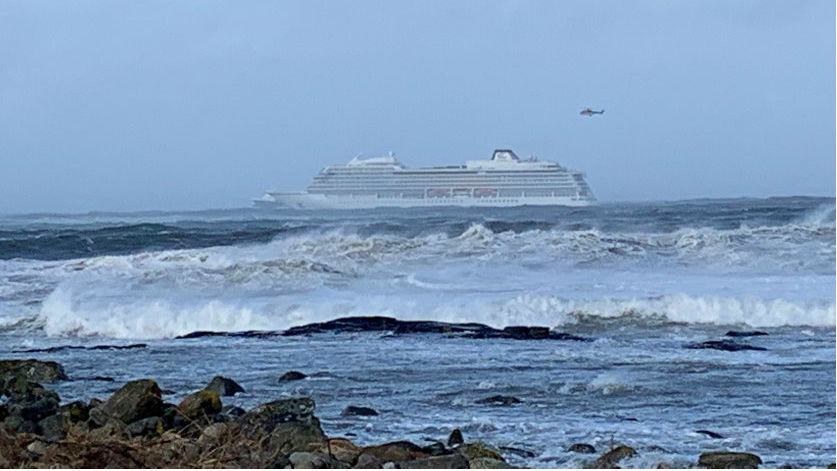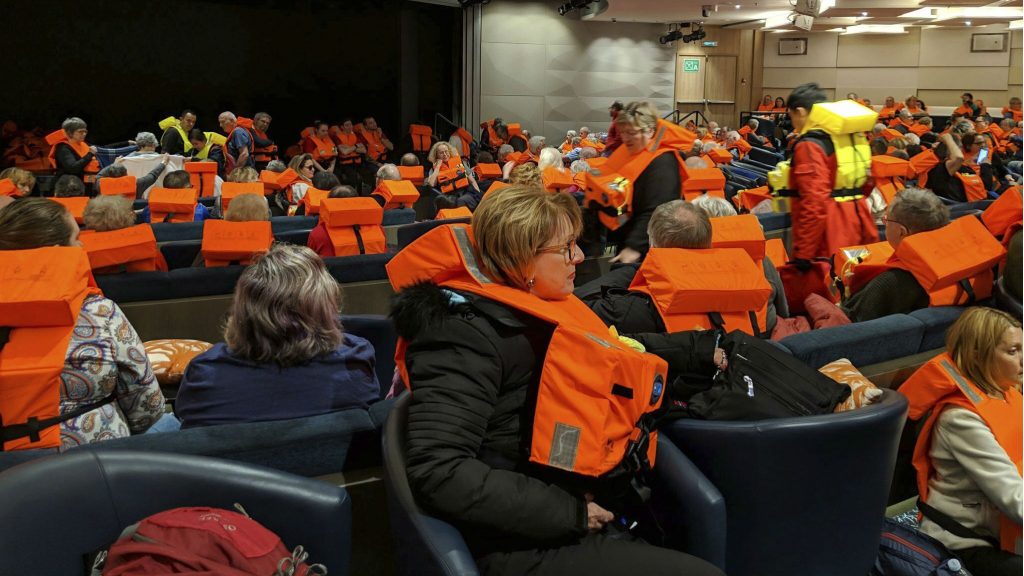Low oil pressure caused Viking Sky engine failure says Norwegian authority

Norway’s Maritime Authority (NMA) says low oil pressure caused the engine failure that stranded the Viking Sky in stormy waters this weekend off the coast of Norway.
“The level of lubricating oil in the tanks was within set limits, however relatively low, when the vessel started to cross Hustadvika,” the NMA said in a news release this week.
Hustadvika is the part of the Norwegian coastline where the incident took place.
“The tanks were provided with level alarms, however these had not been triggered at this time. The heavy seas in Hustadvika probably caused movements in the tanks so large that the supply to the lubricating oil pumps stopped. This triggered an alarm indicating a low level of lubrication oil, which in turn shortly thereafter caused an automatic shutdown of the engines.”
Viking Oceans Cruises, the division of Switzerland-based Viking Cruises that operates the Viking Sky, said they are working to make sure the problem does not reoccur on their other ships.
“We welcome the prompt and efficient investigation carried out by the NMA and we fully understand and acknowledge their findings,” the company said in a statement on Wednesday.
“We have inspected the levels on all our sister ships and are now revising our procedures to ensure that this issue could not be repeated. We will continue to work with our partners and the regulatory bodies in supporting them with the ongoing investigations.”
Weekend mayday
The cruise ship sent out a mayday on Saturday, with 1,373 passengers and crew on board, after its engines shut down, the crew was forced to drop the ship’s anchors to keep the boat from being tossed towards rocks by the storm.
Passenger injuries ranged from cuts to trauma to broken bones. Several people were hospitalized.

Helicopter rescue crews spent some 19 hours, making some 30 trips back and forth to evacuate hundreds of passengers, before the ship was able to make its way to shore on Sunday with remaining passengers and crew.
The Viking Sky had been travelling from the Arctic Norwegian city of Tromso, to the city of Stavanger in the country’s South at the time of the incident.
On Tuesday, the NMA gave the ship a permit for a single voyage to the city of Kristiansund for repairwork to be done.
General safety notice issued
The NMA has issued a general safety notice to ship crews and companies to make sure they have a continuous supply of lubricating oil to engines and other critical systems when in poor weather conditions and recommend that it be included in ships’ risk assessments.
The NMA says “dialogues” between them, the cruise company, the Accident Investigation Board Norway and Lloyd’s Register, the ship classification and certification society, continues in order to “…reveal underlying causes and identify appropriate measures.”
Write to Eilís Quinn at eilis.quinn(at)cbc.ca
Related stories from around the North:
Canada: ‘No panic’ as cruise ship ran aground in northern Canada, says passenger, CBC News
Finland: Baltic Sea helps Helsinki post record cruise season, Yle News
Iceland: Environmental groups call on Arctic cruise industry to reduce pollution in Iceland , Eye on the Arctic
Norway: Several ships being launched to feed Arctic cruise boom, The Independent Barents Observer
Russia: Luxury cruises lured by Arctic Russia, The Independent Barents Observer
United States: Northwest Passage cruise marks turning point in Arctic tourism, Alaska Public Media



